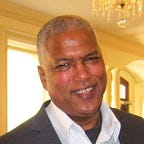Seneca Village, NY: A Black Community Lost to History
When New York Destroyed a Black Community to Build a Park
In 1825, a free Black man named Andrew Williams bought land in the middle of Manhattan. His purchase was followed up by additional purchases by the African Methodist Episcopal Church (AME) for the purpose of developing the land. Most of the inhabitants were free Black people, and over 50% of them owned the homes they lived in. In a land where the vote was limited to property-owning males, many of the Black male residents had the right to vote and did so.
New York had a growing free population. The Gradual Emancipation Laws of 1799 and 1817 would allow enslaved people to age into their freedom when children born to enslaved people reached the ages of 28 for men and 25 for women. They would join the growing population of free Black people that already existed. with free Black people in New York dating back to 1644.
The community of Seneca Village grew rapidly and soon housed several hundred people, including German and Irish immigrants. Blacks and whites attended church side by side. Elsewhere in New York, wealthy white socialites were making plans for a sprawling park to fend off European criticisms that Americans had no appreciation for culture. They wanted a place where they could ride in their carriages to…
